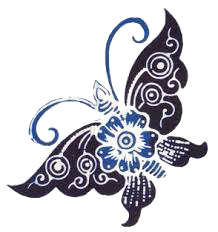Hand-drawn Batik
Hand-drawn Batik
Written Batik is one type of batik production process whose technical motifs are directly written manually. The tool for writing it or commonly called canting is made of copper with a bamboo handle. The tip of the canting or commonly called the bow has various holes, so that it can determine the size of the motif. While the canting reservoir is called nyamplung. Nyamplung can contain wax or dye, depending on the batik technique that will be used. Actually, there are many types of batik, such as written batik, stamped batik, Pekalongan batik, jumputan batik, solo batik, painted batik, there are also semi-classical written batik, contemporary batik, and modern batik, and batik Tegalan.
Batik historically comes from the time of the ancestors known since the seventeenth century which was written and painted on palm leaves. Batik motifs and patterns are still dominated by animal and plant designs. However, in the history of its development, batik has developed, from painting patterns of animals and plants to abstract motifs resembling clouds, temple reliefs, wayang beber and so on. Furthermore, through the incorporation of painting styles with the art of clothing decoration, the art of written batik emerged as we know it today.
The batik process has more than one stage. The first stage is called nglowong or ngrengrengi. This is the work of carving the night on the outline of the main motif of batik. That's why it's called nglowong, from the word klowong or ngrengrengi dari reng-rengan, which means a skeleton. At this stage the canting used is canting klowong.
The next stage, when the batik maker fills the empty spaces in the diklowong framework, with dots or fine lines, is called the ngiseni stage or filling with isen-isen (content motif). For this work, the batik maker uses canting isen (from the word content) which consists of various canting cecek. if will fill the space with dots isen motif. Can also use canting klowong batik, depending on the needs of the design.
The next stage, if there are parts of batik cloth or motifs that will be closed or blocked (to leave it white), the term batik is walled, then the closure uses wax using a canting blokan. For a fairly wide area, batik can also use a brush.
The three types of canting have different diameters of shoots (night fluid channels). Canting with the smallest diameter canting cecek. Bigger than cecek, namely canting klowong. Canting wall with the largest diameter. The largest diameter of the canting is 1 mm (the wall).

